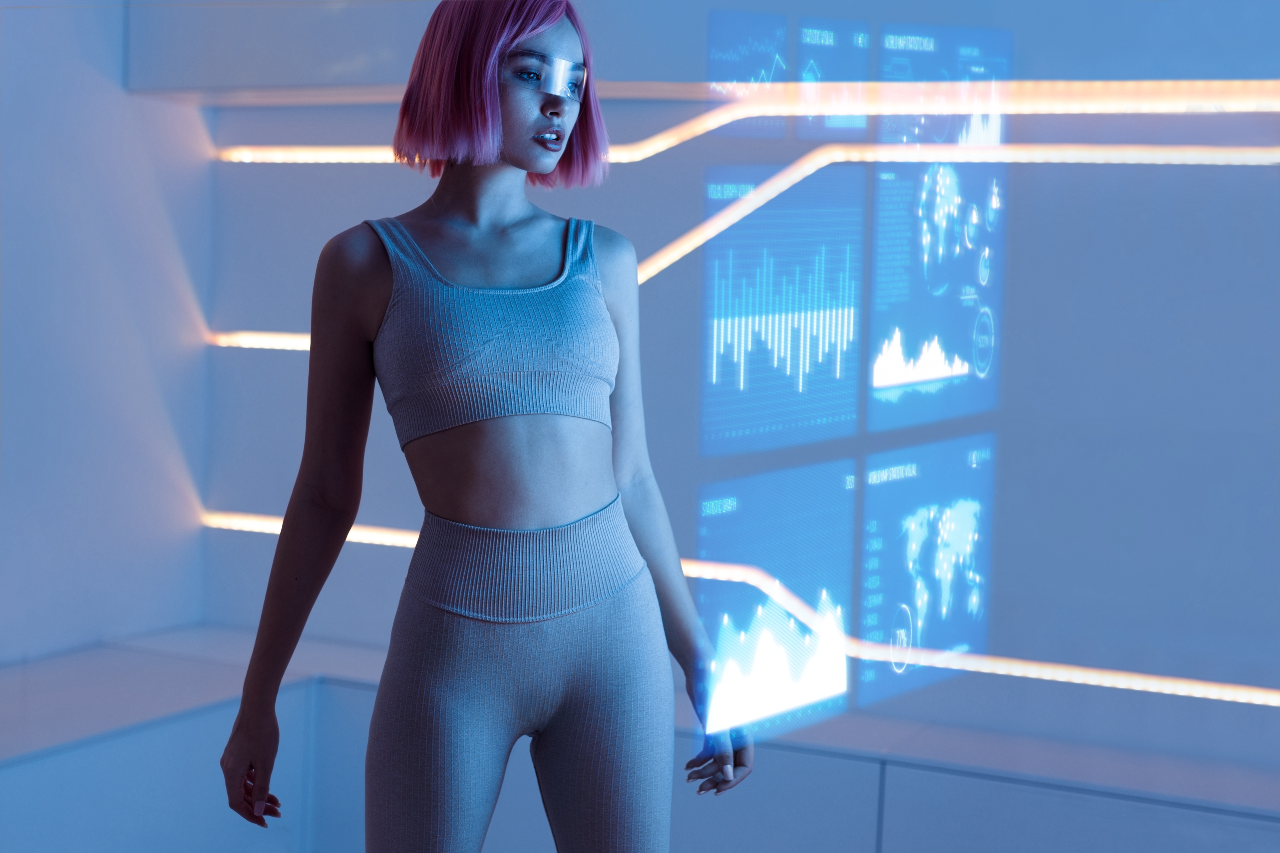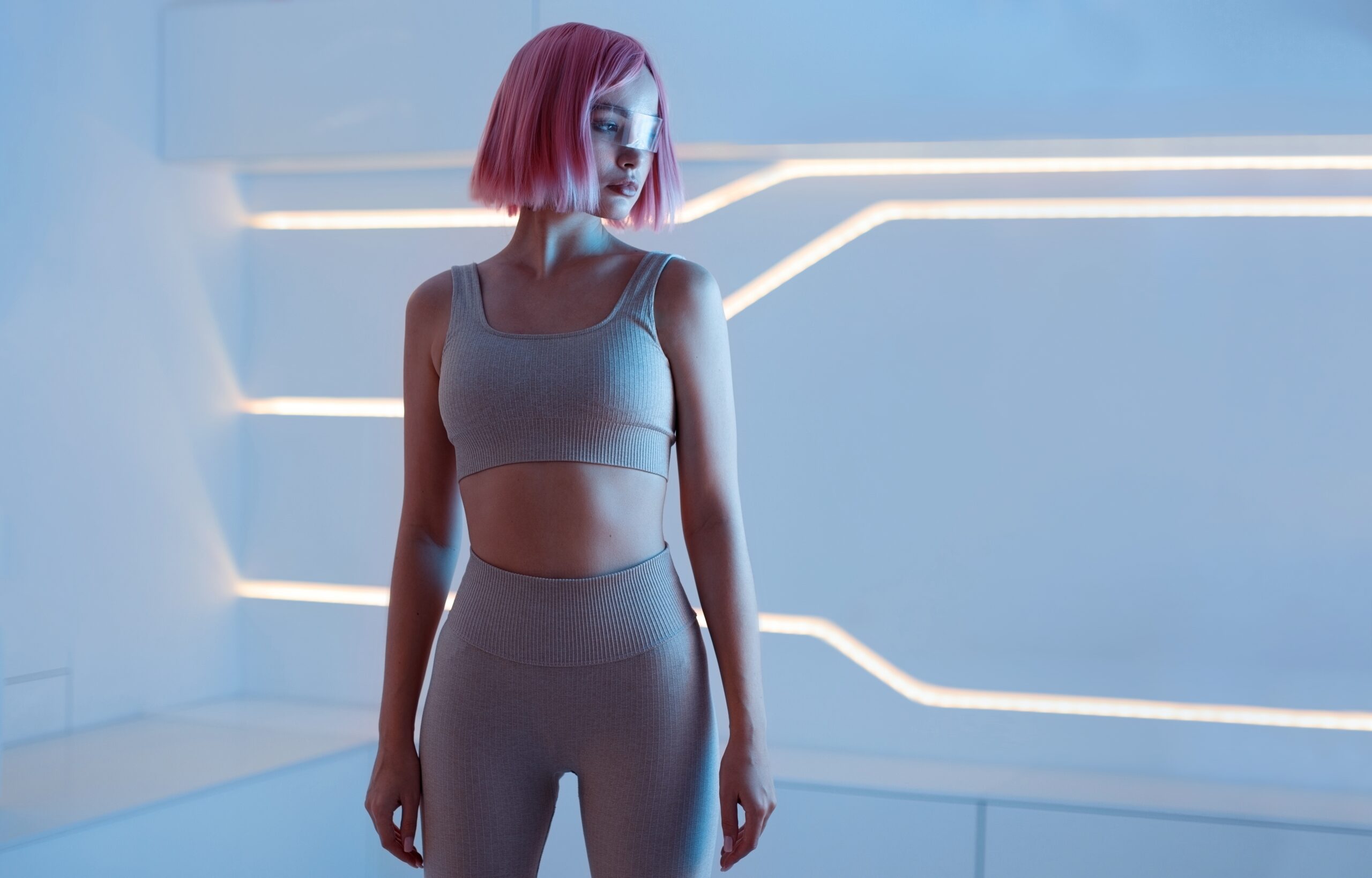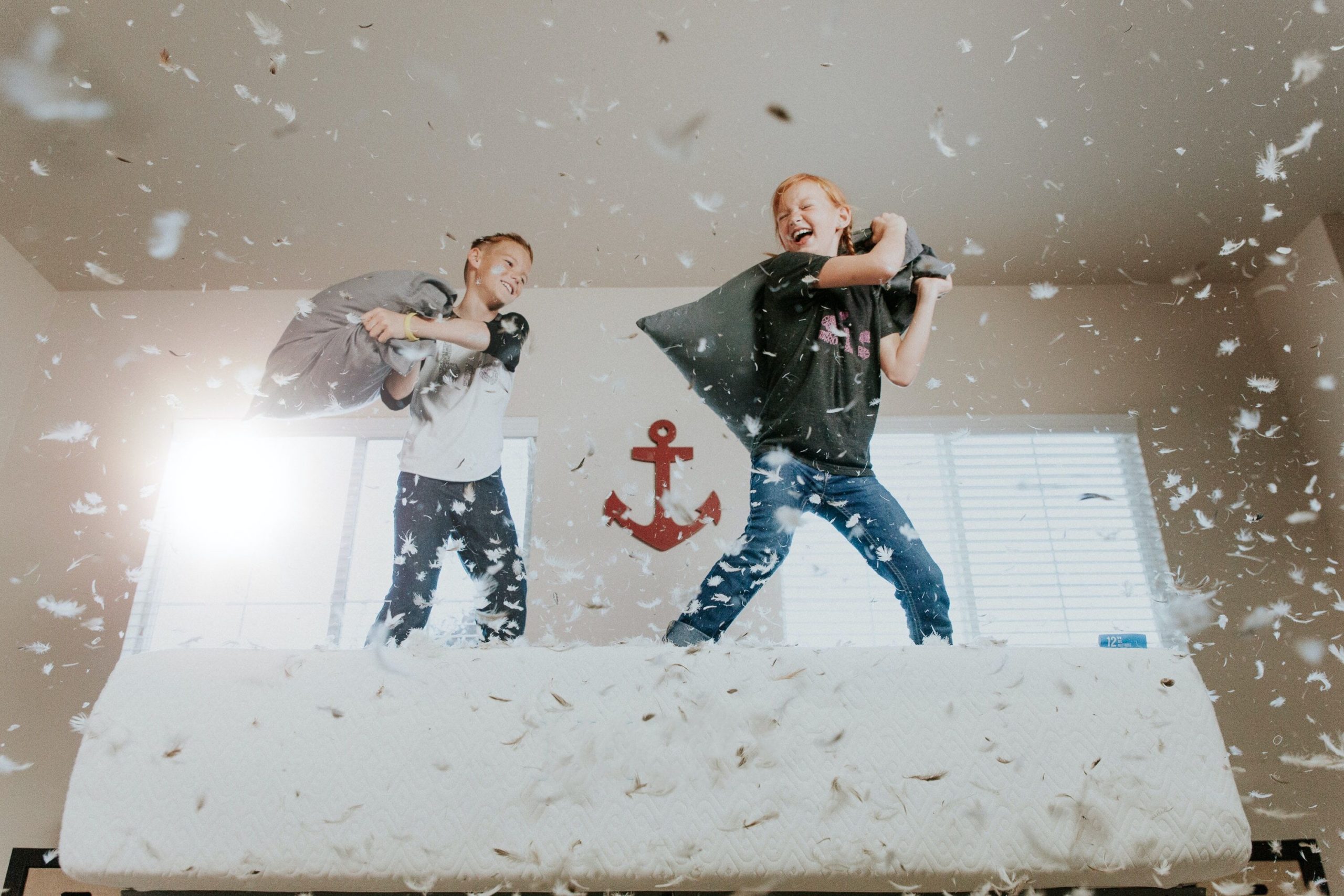March 2022 marks the first-ever Metaverse Fashion Week, demonstrating the increasing interest and demand for virtual clothing. Iconic British department store Selfridges will start the week by unveiling their flagship virtual store; and brands such as Elie Saab, Guo Pei, Tommy Hilfiger, Dolce & Gabbana, Cavalli, Paco Rabanne are expected to participate.
Hosted by Decentraland, the virtual event is open to the fashionistas, the tech community and the public. It is being heralded as the first major opportunity for anyone, anywhere in the world to see runway presentations and purchase designer virtual garments for their online avatars. From the perspective of designers, the possibilities for revenues and profits are limitless. Virtual fashions have limited labour costs, no material costs and zero transport and logistical costs. From the perspective of the consumer, these virtual fashions are an opportunity to express their identity in the digital realm just as passionately as they do in the real world.
But, does it all sound a bit too much? A lot of people are struggling with the idea of virtual fashions, and many are dismissing it as a fad. But the truth is, we’re already using virtual goods all the time. The CD has long since been replaced by a digital file, the photo album has been replaced by Instagram, books are now downloaded to Kindles, and movies are streamed directly to our TVs. We choose the characteristics and outfits of avatars in the games we play, and millions of people augment their features or wear virtual accessories in their social media selfies. People are engaging with intangible objects all the time and clothing is a natural extension of that.
What was once a novelty is now becoming an everyday reality of the online experience. As we move into a more integrated and personal digital world, why wouldn’t people want their virtual selves to have a virtual wardrobe? Research conducted by Squarespace revealed that 60% of Gen-Z and 62% of Millennials believe “how you present yourself online is more important than how you present yourself in person.” A positive virtual reputation is vital and as these people shift from social media into the Metaverse, appearances will be of primary importance.
Designers, always quick to embrace the latest trends, have made a move into the NFT, digital fashion sphere. In 2022 Dolce & Gabbana set a new record by selling a nine-piece NFT collection for $5.7 million. Fellow Italian brand, Gucci has taken a strong interest in both the Metaverse and NFTs. This year they produced a film co-directed by Alessandro Michele and award-winning photographer and director Floria Sigismondi. The film, inspired by their 2022 Aria real-world catwalk collection, was then ‘minted’ as an NFT and sold by Christie’s auction house for $25,000. Before this, the brand had created an exclusive digital-only collection with Roblox where limited-edition Gucci items could be found hidden away in the virtual gaming space or bought by users. The game’s demographic of 9 – 15 year-olds could then dress their gaming avatars in these Gucci items. Lastly, the Spanish and French luxury house Balenciaga is also making its presence known in another vastly popular online world. The popular online multiplayer game Fortnite has partnered with Balenciaga to create in-game fashions and accessories along with real-world apparel. Epic Games’ Senior Manager of Partnerships, Emily Levy, explained “Fortnite is essentially at its core all about fashion and self-expression, agency and fantasy,” adding “As we think about Fortnite expanding into a social entertainment ecosystem, fashion is really at the core of culture.”
Right now, most of the Metaverse fashions are being glimpsed through NFTs or in-game collaborations. In time these digital fashions may be able to hop from one platform to another. The Hermes scarf your gaming avatar wears in Animal Crossing will still be around your virtual neck at the Team’s meeting on Monday morning.
Of course, Metaverse avatars can be an idealized version of the user, a total fantasy or a facsimile. Users can be anyone or anything they like in the Metaverse. However, in some instances, it will be necessary and appropriate for an avatar to be an accurate representation of the real-life user. Business meetings in a virtual boardroom, won’t be the environment to present as a panda or a clown. Creating an accurate digital representation requires cutting edge technology, which is where the Metaverse and digital sizing technologies capable of accurately capturing the physical dimensions of the human body, will intersect.
As we enter the Metaverse, this technology will be used to map the body and create a true-to-life avatar. With accurate sizing data online and off, digital and real fashions can be made to fit more accurately creating a more bespoke online experience and a more convenient and less wasteful offline shopping experience.
As Metaverse Fashion Week returns season after season, the technology and investment will grow. What seems difficult to imagine today, will become normalized tomorrow. In the future, instead of buying office wear for yourself, you might be buying virtual office wear for your work avatar.
Read also:
The future of personal shopping
Can digital tools help reduce the curse of post holiday season customer returns?
The Impact of Fast Fashion on Workers and the Environment
Jangan Menyerah Untuk Bawa Pulang Hadiah Slot88 Terpercaya Cuan Bertambah
Saat ini, kebebasan bermain game slot online semakin menjadi pilihan utama bagi para penggemar permainan cobramoto.com. Kesempatan untuk meraih keuntungan besar melalui slot online telah menjadi daya tarik tersendiri. Setiap pemain memiliki peluang untuk mendaftarkan diri dan merasakan berbagai manfaat yang ditawarkan oleh slot online di Indonesia. Dengan partisipasi aktif, pemain dapat mengalami peningkatan penghasilan secara signifikan, menjadikan slot sebagai salah satu sumber pendapatan yang sangat menguntungkan. Setiap pemain memiliki strategi dan pendekatan yang berbeda dalam bermain slot online. Ada yang lebih memilih untuk bermain dengan jumlah taruhan kecil, sementara yang lain lebih suka meningkatkan taruhan mereka secara bertahap. Apapun strateginya, yang terpenting adalah pemain bisa menikmati permainan dan meraih kemenangan sesuai dengan kemampuan mereka.
Banyak pemain yang merasakan pengalaman positif saat bermain game slot online, terutama karena aksesnya yang mudah dan pendaftaran yang tidak memerlukan biaya. Hal ini membuat semakin banyak orang tertarik untuk bergabung dan mencoba keberuntungan mereka dalam permainan ini. Selain itu, permainan slot online menawarkan berbagai tema dan variasi yang menarik, memberikan pengalaman bermain yang tidak monoton. Slot online menawarkan fleksibilitas dalam bermain, sehingga setiap pemain bisa menyesuaikan permainan sesuai dengan preferensi mereka.
Siapapun yang Bermain Dengan Sabar Membuat Slot Jadi Pilihan Tak Tertandingi
Dengan berbagai pilihan yang ada, pemain bisa memilih game yang sesuai dengan minat dan preferensi mereka. Dari tema petualangan hingga cerita klasik, slot online Indonesia menyuguhkan berbagai jenis permainan yang bisa dinikmati kapan saja. Keberagaman ini membuat pengalaman bermain semakin menarik dan menyenangkan. Tidak heran jika banyak pemain yang menjadikan game situs slot resmi sebagai salah satu cara untuk mengisi waktu luang sekaligus mendapatkan penghasilan tambahan. Kemenangan dalam permainan slot online bisa diraih oleh siapa saja yang memiliki kesabaran dan tekad yang kuat. Dengan memahami cara kerja permainan dan mengatur strategi yang tepat, pemain bisa meningkatkan peluang mereka untuk meraih kemenangan yang lebih besar.
Kini slot indonesia juga menawarkan berbagai fitur bonus yang bisa dimanfaatkan oleh pemain untuk meningkatkan peluang kemenangan. Dengan memahami cara kerja setiap fitur, pemain dapat meraih hasil yang lebih baik. Bonus seperti putaran gratis dan jackpot progresif sering kali menjadi daya tarik utama bagi para pemain. Dengan memanfaatkan fitur-fitur ini secara maksimal, pemain bisa meningkatkan jumlah kemenangan yang diperoleh. Setiap putaran adalah kesempatan untuk meraih hasil yang lebih baik, asalkan dilakukan dengan penuh perhitungan. Dengan sikap yang positif dan tidak mudah menyerah, setiap pemain memiliki peluang untuk meraih kemenangan yang signifikan.
Praktisnya Rekomendasi Game Slot Ada yang Baru!
Bermain slot online juga tidak memerlukan banyak persiapan. Cukup dengan memiliki perangkat yang terhubung ke internet, pemain sudah bisa menikmati berbagai permainan yang ditawarkan. Hal ini memberikan fleksibilitas bagi pemain untuk bermain kapan saja dan di mana saja, sesuai dengan kenyamanan. Kepraktisan ini menjadi salah satu alasan mengapa slot resmi semakin banyak orang yang tertarik untuk mencoba peruntungan mereka di dunia slot online. Kini mencicipi kemenangan slot indonesia juga menjadi salah satu sarana untuk melatih keterampilan dalam mengambil keputusan. Pemain harus bisa menentukan kapan saat yang tepat untuk meningkatkan taruhan atau kapan harus berhenti bermain. Kemampuan untuk mengambil keputusan dengan cepat dan tepat adalah salah satu faktor penting yang bisa mempengaruhi hasil akhir permainan.
Kenyamanan dan kemudahan akses juga menjadi faktor penting yang membuat slot online semakin populer. Pemain tidak perlu lagi mengunjungi kasino fisik untuk merasakan sensasi bermain slot terpercaya. Dengan perkembangan teknologi, pemain bisa menikmati pengalaman bermain yang sama, bahkan lebih seru, melalui layar perangkat mereka. Grafis yang menarik, efek suara yang realistis, serta animasi yang memukau membuat pengalaman bermain slot online semakin menyenangkan. Dengan berlatih secara rutin, pemain bisa mengasah keterampilan mereka dan meningkatkan peluang untuk meraih kemenangan yang lebih besar.
Terus Bersosialisasi Maka Slot Akan Kasih Kunci Jawaban Taklukan Game
Memberikan hiburan, slot terpercaya juga menjadi alternatif bagi mereka yang ingin meraih keuntungan. Dengan strategi yang tepat dan pemahaman yang baik mengenai permainan, pemain bisa mendapatkan hasil yang memuaskan. Ini menjadi daya tarik tersendiri bagi mereka yang ingin mencoba peruntungan tanpa harus mengeluarkan modal besar. Keuntungan yang diperoleh dari bermain slot online bisa menjadi tambahan penghasilan yang lumayan, apalagi jika dimainkan dengan bijak. Bagi banyak pemain, game slot online resmi juga menjadi sarana untuk bersosialisasi slot online terpercaya. Banyak platform yang menyediakan fitur obrolan, memungkinkan pemain untuk berinteraksi dan berbagi pengalaman dengan sesama pemain. Ini menambah keseruan dalam bermain, karena pemain bisa saling memberikan tips dan trik untuk memenangkan permainan. Interaksi ini juga bisa menjadi ajang untuk menambah wawasan dan pengetahuan tentang dunia slot online.
Penting untuk selalu memahami mekanisme setiap permainan sebelum memutuskan untuk bertaruh. Dengan pemahaman yang baik, pemain bisa membuat keputusan yang lebih bijak dan menghindari kerugian yang tidak perlu. Selain itu, mengetahui kapan harus berhenti juga menjadi kunci untuk menjaga kestabilan permainan. Bermain dengan tenang dan tidak terbawa emosi akan membantu pemain untuk mencapai hasil yang lebih baik. Keuntungan lain dari bermain slot online adalah kesempatan untuk meraih jackpot besar. Banyak permainan slot online resmi yang menawarkan jackpot dengan jumlah yang sangat menggiurkan. Meskipun peluang untuk meraihnya tidak selalu besar, namun dengan strategi yang tepat, pemain bisa meningkatkan kemungkinan untuk memenangkan hadiah utama tersebut. Ini menjadi salah satu alasan mengapa banyak orang tertarik untuk mencoba peruntungan mereka di dunia slot online.
pembelajaran yang Mudah di Pahami Slot Indonesia Paling Banyak di Minati
Jackpot banyak permainan slot yang juga menawarkan bonus harian yang bisa dimanfaatkan oleh pemain. Bonus ini bisa berupa putaran gratis atau tambahan saldo yang bisa digunakan untuk bermain lebih lama. Dengan memanfaatkan bonus ini, pemain bisa meningkatkan peluang untuk memenangkan permainan tanpa harus mengeluarkan biaya tambahan. Ini menjadi salah satu cara bagi pemain untuk meraih keuntungan lebih banyak tanpa risiko yang besar. Kehadiran berbagai tema dan fitur yang inovatif dalam slot gacor membuat permainan ini semakin seru dan menantang. Para pemain game slot dapat memilih dari berbagai macam jenis permainan yang sesuai dengan selera mereka. Dari tema petualangan hingga fantasi, setiap permainan menawarkan sensasi yang unik dan berbeda. Hal ini membuat pengalaman bermain menjadi lebih menyenangkan dan tidak membosankan. Dengan begitu, para pemain tidak hanya sekadar bermain untuk bersenang-senang, tetapi juga memiliki peluang untuk mendapatkan keuntungan yang menggiurkan.
Slot online juga menawarkan banyak pilihan permainan yang terus diperbarui. Ini membuat pemain tidak mudah bosan dan selalu memiliki sesuatu yang baru untuk dicoba. Dengan mengikuti perkembangan terbaru dalam dunia slot, pemain bisa menemukan permainan yang lebih menarik dan menantang. Ini juga menjadi kesempatan bagi pemain untuk terus mengasah keterampilan bermain mereka dan mencoba strategi baru yang lebih efektif. Ini membuat semakin banyak orang tertarik untuk mencoba peruntungan mereka dan meraih impian melalui permainan ini. Tidak hanya memberikan hiburan, slot online juga memberikan kesempatan bagi siapa saja untuk meraih keuntungan nyata.
Layanan Optimal 24 Jam Setiap Hari Buat Slot Online Terperecaya Jadi Partner Gacor
Optimalkan main slot online tidak hanya memberikan kesenangan, tetapi juga kesempatan untuk meraih keuntungan nyata. Dengan modal yang terjangkau, pemain bisa mendapatkan hadiah yang cukup besar. Hal ini tentu saja menjadi daya tarik tersendiri bagi banyak orang. Tidak perlu modal besar untuk memulai, tetapi hasil yang didapatkan bisa sangat menguntungkan. Dengan bermain secara bijak slot terpercaya memanfaatkan setiap peluang yang ada, siapa pun bisa merasakan keuntungan dari permainan ini.
Tidak heran jika slot88 menjadi pilihan utama bagi banyak orang yang ingin mencoba peruntungan mereka. Dengan berbagai pilihan permainan yang tersedia, setiap pemain bisa menemukan game yang paling sesuai dengan preferensi mereka. Ini memungkinkan pemain untuk menikmati permainan dengan lebih santai dan tetap berpeluang meraih kemenangan besar. Sensasi bermain yang ditawarkan oleh slot online membuat banyak orang betah dan ingin terus mencoba permainan yang ada.
Never Miss Out
Sign up to receive our latest news and insights

Thank you!
we’ll keep you updated




